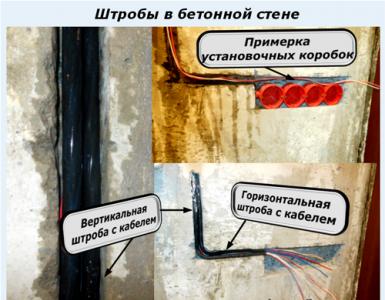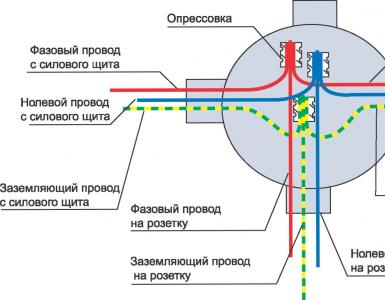Instructions on how to properly connect the telephone socket
Although infrequently, there is a need to change the telephone socket or install an additional one in another room or, for example, in the kitchen. Such a situation may arise when carrying out repairs in an apartment or buying an additional device with the need to install a new line. Make connecting a telephone jack simple and practically safe. How to do this, we will tell below.
Depending on the type of telephone line installation, all devices can be divided into two main types:
- outdoor, when installation is carried out directly on the wall surface. The line in such cases is also usually drawn in an open (outer) way;
- internal, when mounted in a recess specially provided for this purpose. It makes sense to install if there is a hidden cable installation.
Another way to classify is the type of connectors (connectors) used to connect to the telephone. The following types can be distinguished:
- Soviet-style RTSHK-4;
- modern RJ-11, usually used at home;
- modern RJ-14, used in offices for connecting faxes, laying a modem line and for other equipment;
- modern RJ-25, which are special-purpose connectors;
- universal or combined, combining two or more types of connectors, for example, RTSHK-4 and RJ-11.
The old Soviet RTSHK-4s are practically no longer used anywhere, since all modern telephone sets have connectors (connectors) for an RJ-11 euro socket. The plug for these old sockets had four flat metal connectors and a plastic flat tab. Surely, this design is visually familiar to many. The connection was made using a two-wire wire.
The connection of the device in RJ-11 connectors also takes place with a two-wire wire. The same type of sockets in modern devices is used to connect the handset directly to the device.
RJ-14 connectors use a four-wire wire, while RJ-25 uses a six-wire wire. The connection of the last type of sockets must be entrusted only to qualified specialists.
Video "Installing a euro socket"
Wiring diagram
The scheme for connecting home devices, regardless of the type of connectors, is the same everywhere. It is necessary to connect the two ends of the telephone wire to the corresponding contacts in the socket. Consider how this is done in devices of the old and new types. Depending on the type of installation, we will not describe in detail the process of laying the cable and installing the device on the wall, but only describe the connection diagram. We only note that the following tools may be needed:
- screwdriver;
- wire cutters;
- drill or perforator;
- a sharp knife or blade for stripping cores from insulation;
- crown on brick or concrete when performing hidden installation.
In connectors of the old type RTSHK-4, when you open the cover, you will see two contacts on one side and two on the other. At the bottom of the box of the device there will be a hole for the flat tab of the plug. Connect to the contacts on the right. The polarity of the wires does not matter.

To do this, cut off the telephone line cable with a small margin, which will then hide under the outlet cover, and strip the contacts with a sharp knife or blade. It is better to perform this operation in rubber gloves, since the voltage in the line in standby mode is 60V, and in call mode - 120V. Such tension is not fatal, but it can “bite”.
The connection scheme for RJ-11 type connectors is similar to the method described above. When you open the cover, you will find contacts that are wired in red and green (usually). Red indicates negative polarity and green indicates positive. If your line cable has the same wire coloring, then make the appropriate connection: red to red, green to green. Although polarity does not usually matter, some modern devices may react negatively to non-compliance with this condition.
Features of connecting a Legrand outlet

The products of the French company Legrand are in steady demand due to the high quality of the products. The telephone cable connection scheme is the same as in the cases described above, with the exception of a small nuance.
Legrand's products have a built-in contact cleaning system, which eliminates the need for manual contact cleaning. When installing this product at home, you will need only two wires to connect as usual. If the socket is designed for four pins, then use two middle ones, while trying to match the colors of the cores when connecting.
The wires must be inserted into the hole of the corresponding contacts (without stripping the insulation on the cores) and the view of the clamping device must be rotated a quarter of a turn. This is all. It remains to close the lid and the job is done.













